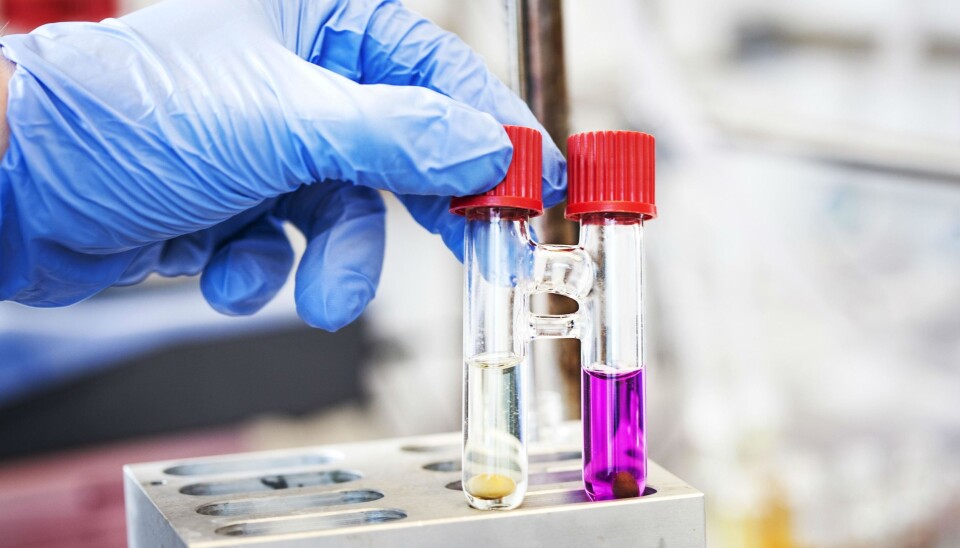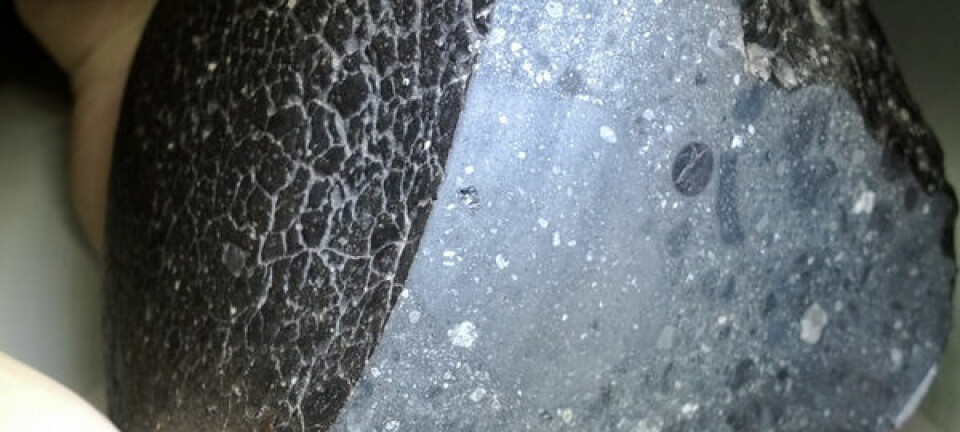
Danish scientists are turning CO2 into medicine
We should find more ways to reuse CO2, says scientists who just developed a method to turn the greenhouse gas into medicine.
We have become accustomed to recycling our waste but when it comes to one of the Earth's most controversial waste products carbon dioxide (CO2) we release it into the atmosphere by the ton without thinking about recycling it.
And this should change, says Professor Troels Skrydstrup of Aarhus University's Department of Chemistry and the Interdisciplinary Nanoscience Center (iNANO).
He has just developed a new method of recycling CO2 into medicine which was recently published in the Journal of the American Chemical Society.
"Instead of continuing to emit CO2, which results in climate change, it would be fantastic if we could make use the CO2," says Skrydstrup. “There's plenty of CO2 in the atmosphere and if we could close the ring and recycle the CO2 we emit it would be a stroke of genius."
At the moment he is working on setting up a research centre to study various possibilities for using CO2 in chemicals, food, plastics, and much more.
Large potential - but no method
At the Technical University Denmark (DTU), Professor David Tanner of the Department of Chemistry agrees that there can be great potential in recycling CO2 and turning it into useful products.
"Many people are interested in doing this, and it's possible to make a lot of things using CO2," he says. "You can look at CO2 as a raw material with plenty of possible uses in industry."
But, adds Tanner, it can turn out to be very difficult to change the CO2 in the right way. “We lack some effective methods for this.”
How CO2 is turned into medicine
Converting CO2 into medicine can sound a little like a fantasy, and the CO2 would not be the only ingredient in such a 'climate-friendly' pill.
In the new study, Skrydstrup turns the CO2 into medicine by converting it to carbon monoxide (CO) -- a toxic gas but also a very important ingredient in the chemicals industry and in the production of pharmaceuticals because it reacts easily with other substances.
"The problem is that carbon monoxide is very toxic, which makes it difficult to manage for industry. In this way it would be an extra benefit if we could replace the carbon monoxide by CO2."
Removes oxygen from CO2 not easy
Chemically CO2 and CO comprise the same atoms, carbon and oxygen, but unlike CO2, carbon monoxide has only one oxygen atom.
Removing a single oxygen atom from a CO2 molecule may sound like an easy job but it’s actually quite difficult as CO2 is a very strong and stable molecule, says Tanner.
"In reality it isn't as easy as it sounds," he says. "There are other ways of removing an oxygen atom from a CO2 molecule, but in this study they've developed a new and much more simple way of doing it. That's impressive."
The concept has been proved
"We have shown that we can form four different pharmaceuticals using CO2," says Skrydstrup. "We regard this as 'proof of concept', and we hope we can further develop the method and form other types of pharmaceuticals and chemicals using CO2."
He points out that this is the first time the researchers have successfully moved a step further and not just converted CO2 to carbon monoxide -- but in the same process got the carbon monoxide to react with other substances to become a pharmaceutical.
"All other attempts stopped after the researchers had turned CO2 into carbon monoxide," says Skrydstrup. "With our reaction we went directly to the next step and used the carbon monoxide immediately. We started with CO2 and ended with a pharmaceutical without having to store the carbon monoxide during the processes."
Avoiding toxic carbon monoxide is advantageous
At DTU, Tanner sees the new method of turning CO2 into pharmaceuticals 'directly' -- without having to handle toxic carbon monoxide during the process -- as an advantage for industry.
"Carbon monoxide is very toxic," he says. "You can't smell it, you can't taste it, and it's dangerous to work with. Therefore it is best to use it in highly controlled quantities. But traditionally it has been necessary to have a very large amount of carbon monoxide for the reaction."
Tanner adds, "What's new in their study is that they can generate precisely the amount of carbon monoxide they need for their reaction. That is of great importance to safety."
However, both Tanner and Skrydstrup point out that the new method must be tweaked and developed further before it is efficient enough for use in the pharmaceutical and other chemical industries.
"We have made some progress but there is still a long way to go before we see industrial applications," says Skrydstrup.
CO2 medicine won't help the climate
But will it actually make any difference to the climate if the pharmaceuticals industry starts to use CO2 in our pills instead of emitting it to the atmosphere?
No, not really, says Tanner.
"If we're talking about climate change and energy problems, then we must be working on a much larger scale before this will have any real importance," he says. "I see their study as a good contribution to research and with potential for use in industry. But with regards to climate change it won't really help."
Skrydstrup concedes that climate-friendly pills are a long way from saving the planet and sucking out all the CO2 from the atmosphere.
"Our project will not solve the problems with CO2 any time soon as we use only minute quantities of CO2 when making pharmaceuticals," he says.
"But it is part of the way of thinking that we can recycle CO2 -- and potentially there are plenty of other ways of doing this in the future," says Skrydstrup.
Scientists from the Technical University of Denmark recently published a new and effective method of turning CO2 into climate-friendly fuel.
--------------
Read the original story in Danish on Videnskab.dk
Translated by: Michael de Laine











